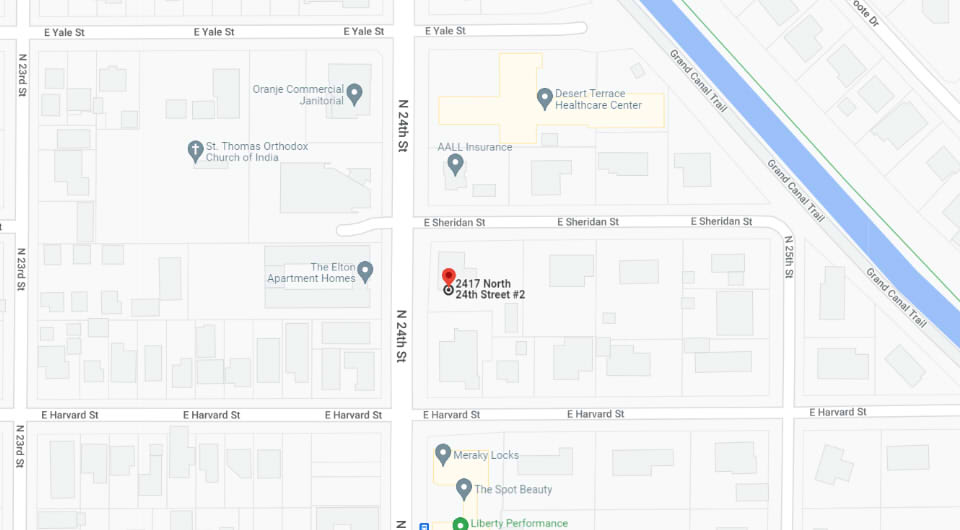Shoulder dystocia injuries can have long-term repercussions on the baby, and this could be due to negligence, delay, or inappropriate measures by medical professionals. If you or someone you know suffered a shoulder dystocia-related birth injury caused by negligence during pregnancy or delivery, you can contact us at the Phoenix Personal Injury Attorney Law Firm for legal advice and help in seeking compensation.
A Brief Overview of Shoulder Dystocia
A shoulder dystocia is a medical emergency that occurs when a baby's shoulder is stuck in the mother's pelvic bone after the head has been delivered. If the baby's head passes smoothly through the pelvis, the rest of the child's body will follow.
There is a much higher probability of shoulder dystocia when a baby's chest and shoulders are more significant than the head. This comes with an increased risk of complications. After a shoulder dystocia delivery, trauma to the baby could result from the application of excessive force by the obstetrician to free the shoulder from its stuck position. This can harm the baby's delicate neck nerves.
Medical Malpractice Under Arizona Law
Engaging an attorney to defend you in an Arizona medical malpractice case is vital because the state's laws on the subject are complex. Medical malpractice lawsuits are regulated by a variety of complicated civil laws. One slip-up in submitting or discussing your claim can result in the court blocking you from receiving compensation.
With a personal injury attorney managing your issue, you can be confident that he or she will verify every step in the filing procedure. A professional attorney is well-versed in the state's medical malpractice statutes.
-
Statute of Limitations
If you feel you have evidence of medical malpractice, you should act swiftly. The state's statute of limitations allows you to file a claim only 2 years from the time of the incident. If you don't meet this timeframe, the court would likely stop you from getting compensated.
-
Affidavit From a Medical Expert
Arizona courts need a legal document approved by a qualified and certified medical expert who works in the field of your case that notes you have justification for a tort case.
-
No Caps on Damages
Many jurisdictions limit or cap the compensation amount an injured victim can get for medical malpractice to save hospitals from going bankrupt. However, there are no damage caps in Arizona. State laws prohibit restricting the recovery of a victim.
These are only 3 of the several statutes that could apply in your Arizona shoulder dystocia case. Other ones include wrongful death statutes, joint and multiple liability, and comparative negligence. A personal injury lawyer can clarify the laws that apply to your claim, providing you with a better idea of what to expect. Then, your attorney can manage the claims procedure on your behalf as you focus your energy and time on recuperating from the injuries.
Complications and Injuries Caused by Shoulder Dystocia
Shoulder dystocia complications during childbirth can affect both the child and the mother. The newborn is particularly vulnerable to some types of injuries, such as:
Brachial Plexus Injuries
The brain relays mobility instructions for the arm via the brachial plexus, a network of nerves located in the shoulder region. If the nerves are damaged, the affected arm becomes unresponsive. Such injuries could be caused by shoulder dystocia or by a doctor pulling or pushing too hard on the baby's head during delivery. If a baby sustains injuries to the brachial plexus, it can develop Klumpke's or Erb's palsy.
Erb’s Palsy
Injuries to the brachial plexus nerve can lead to Erb's Palsy, which in turn can lead to paralysis or weakening of the affected shoulder or arm. The brachial plexus extends from the spinal column to the shoulders, hands, and arms.
Cerebral Palsy
This condition affects the brain's ability to coordinate the body's movement as a result of the deprivation of oxygen during delivery. Prolonged pressure, extreme damage, or umbilical cord compression caused by shoulder dystocia can result in temporary oxygen shortage in the baby's brain.
Klumpke’s Palsy
This condition causes muscle atrophy, stiff joints, and paralysis of the hands and forearms, which gives the hands and fingers a "claw-like" deformity. The condition is caused by nerve injury in the body's lower brachial plexus. Some infants with Klumpke's Palsy also develop Horner's Syndrome, characterized by a droop of the eyelids on the unaffected side of the child's face.
Permanent Disfigurement
Shoulder dystocia during delivery could put too much pressure on the baby's head or shoulder, which could permanently alter the infant's appearance. Using too much force on the baby can result in an injury that stunts or causes abnormal shoulder or arm growth.
Fetal Distress
This condition occurs when unborn babies don't get enough nutrients or oxygen from the mother. A child who experiences a shoulder dystocia complication would find difficulties breathing. Additionally, the baby's umbilical cord could tighten, preventing him or her from receiving any oxygen and nutrients from the mother.
Shoulder or Arm Paralysis
If a baby sustains significant physical trauma as a result of a shoulder dystocia complication, it could permanently lose the use of its affected shoulder or arm. Too much force on a baby's arms or shoulders can cause a paralyzing injury, whether it comes from general trauma or brachial plexus damage.
Death
In extreme circumstances, if the newborn is left unattended for a prolonged period or sustains enough trauma, it could lead to the baby's death. A shoulder dystocia complication is a life-threatening medical emergency. Therefore, it requires a prompt response from qualified medical personnel to prevent major injuries and fatalities.
Additional Developmental Delays
If the baby doesn't get enough oxygen, that could cause problems with brain development as well. The baby could experience delays in learning, talking, and walking.
Peritoneum and Vaginal Tears
Shoulder dystocia can result in injuries to the mother as well. If not handled correctly, the mother runs the risk of tearing her peritoneum or her vaginal membranes. These injuries could cause the mother to experience postpartum fecal or urine incontinence.
Medical Mistakes that Cause Shoulder Dystocia
Some shoulder dystocia injuries can be linked to the recklessness and negligence of medical professionals such as doctors, nurses, or other healthcare workers. All medical professionals bear certain responsibilities to their patients.
When a physician or other healthcare provider is found to have been negligent due to a medical error that occurred during labor or pregnancy, it signifies that they did not exercise the same level of skill and knowledge under similar or the same conditions as other healthcare practitioners.
Significant birth injuries, disabilities, and even loss of life can occur if labor, pregnancy, or delivery care is not provided under the acknowledged standards of practice.
Regarding the responsibility given to a patient, a physician or other medical professional can be held negligent if they fail to keep an eye on things or don't respond to specific scenarios that emerge during delivery. A delivery team should monitor the child and the mother throughout the delivery and labor to detect complications.
Medical professionals can be negligent in a variety of ways, including but not limited to the following:
- Failure to offer appropriate prenatal care as well as adequate interventions during the delivery and labor process.
- Failure to detect and treat a mother's infection.
- Failure to detect and treat preterm labor as soon as possible.
- Failure to identify a macrosomic child.
- Failure to effectively manage a post-term or prolonged pregnancy.
- Failure to respond effectively to bleeding.
- Placenta abruption.
- Failure to address preeclampsia or other infections in the mother.
- Negligent delivery and labor management or a delivery delay.
- Failure to appropriately react and act when fetal heart monitor variations are not comforting and there are signs of distress.
- Misusing forceps or a vacuum extractor during delivery.
- Failing to administer a quick cesarean delivery operation to remove a distressed baby.
- Failing to intubate or resuscitate the newborn child.
Only a thorough examination of the health records will reveal the precise nature of the injuries, including whether or not the delivery team's activities contributed to the birth damage.
Available Compensation
Arizona, patients who have been injured due to medical malpractice can suffer from a wide variety of serious injuries. The most typical ones are bedsores, infections, nerve damage, internal bleeding, spinal cord injuries, psychological trauma, brain damage, or even wrongful death.
Typically, a serious or catastrophic injury that has a greater impact on the victim is worth higher than a small injury. However, the types of damages offered remain unchanged.
- Related medical expenses.
- Emotional distress.
- Pain and suffering.
- Reduced standard of living.
- Scarring or deformity.
- Legal fees.
- lost income.
- Other expenses incurred personally.
- Disabilities.
Punitive damages
You may be entitled to substantial financial compensation from the negligent party for the monetary and emotional losses you sustained. You have the right to file a claim for medical negligence against your primary care practitioner, x-ray technician, specialist, surgeon, nurse, anesthesiologist, pharmacist, dentist, physical therapist, your physician's assistant, medical facility, or any health care institution.
A personal injury attorney can assist you in finding the at-fault defendant and submitting a claim to receive the full amount that will cover your losses.
What a Medical Malpractice Attorney Can Do for You
Those who have been injured as a result of a mistake or negligence made by a healthcare practitioner have the right to file a claim for legal compensation through the civil court system. It's not always straightforward to secure the necessary compensation from an Arizona doctor or medical facility.
Medical and healthcare providers often work with insurance providers that are known for disputing, delaying, and undervaluing claims. A medical malpractice attorney can be useful when taking on an insurance provider in Arizona.
You can concentrate on getting well while an attorney handles your claim. Your attorney will be able to analyze your case, look for indications of malpractice, collect any available evidence, prepare a claim directed at the relevant defendant, and present your case to insurance providers for you.
An attorney will understand precisely how to bargain with insurance companies to obtain a reasonable recovery. If you are unable to settle with the insurer and they refuse to be reasonable, your attorney could be able to bring a medical negligence case on your behalf.
How to Choose an Experienced Attorney to Represent You in a Case of Medical Malpractice
You could be eligible to file a claim for medical malpractice when you or a member of your family suffered serious injuries as a result of the carelessness of a healthcare provider, nurse, or healthcare institution. Here are some recommendations to help you find the best attorney to safeguard your interests.
Knowledge
All claims involving medical negligence should involve testimony from a qualified medical specialist to establish negligence and causation. It is common for medical malpractice claims to be lost during the trial, either because the defense lawyer can employ their medical specialists to baffle the jurors or because the plaintiff's lawyer is incapable of successfully explaining the matter to the court.
Track Record
For a victim of medical malpractice to receive the maximum potential compensation in a case involving medical negligence, the accused's physician or healthcare insurance company needs to acknowledge your attorney. Only then will they pay the sum required to satisfy the victim's hospital bills, loss of earnings, and suffering and pain. The acknowledgment stems from an attorney's proven record of success in court.
Experience
Medical malpractice claims are among the most challenging to prove, despite the ease with which one can locate lawyers that handle a broad range of legal issues, including this. A skilled medical malpractice lawyer needs to be well-versed in both healthcare and the law around medical negligence.
Reviews and Ratings
The level of contentment shown by past clients who brought medical malpractice claims that were comparable to your own is among the strong predictors of an attorney's ability to win cases. If you're going to consult with a lawyer, make sure you get a list of their previous clients (particularly with claims that are comparable to yours). A lawyer who can't provide you with a list probably doesn't have the expertise of a successful track record you need for your claim.
Capacity to Fund the Claim
Economic damages and lawsuits for medical negligence can easily exceed $200,000 even before trial. Many lawyers are unable to provide such a sizable advance, while others require their clients to make payments as the lawsuit progresses. This could end up costing you a significant sum, which is most certainly more than you can afford to pay your attorney upfront.
Shoulder Dystocia FAQS
In this section, we’ll provide answers to some of the most commonly asked questions about shoulder dystocia.
What Causes Baby Shoulder Dystocia?
Shoulder dystocia occurs during vaginal delivery whereby the baby's shoulder becomes wedged behind the pelvis of its mother. Several factors, including the baby's width and size, the mother's pelvic bone size, as well as the baby's orientation during birth, frequently contribute to shoulder dystocia.
What is a Shoulder Dystocia Injury?
Birth injuries from shoulder dystocia happen when the obstetrician or midwife applies too much pressure or force to free the baby's trapped shoulder. Nerve injury and conditions like Erb's palsy could be brought on by excessive use of force or using tools like vacuum extractors or forceps. Shoulder dystocia that is not properly handled may potentially cause cerebral palsy and brain damage due to oxygen deprivation.
Can Shoulder Dystocia Lead To Brain Damage?
During labor, shoulder dystocia can result in oxygen loss and constriction of the umbilical cord. If the infant does not get enough oxygen for an extended period, it will suffer irreversible brain damage.
Are There Ways to Prevent Shoulder Dystocia?
Medical professionals can take precautions that could lessen the likelihood of injury. Shoulder dystocia could be prevented in many instances thanks to screening techniques and the prevalence of technology and prenatal care. Doctors can help patients with shoulder dystocia using recognized medical techniques. To help the shoulders pass, physicians may use a range of gentle pushing or pulling techniques, including repositioning the child and mother.
In extreme cases, a cesarean section could be necessary, or the mother's pelvic bone or baby's collarbones might have to be broken. When medical practitioners fail to use appropriate procedures to address the issue, the mother and child can suffer injuries.
Find a Phoenix Medical Malpractice Attorney Near Me
Any injuries to a newborn child could have life-changing effects on the entire family. If the injuries occurred due to a foreseeable mistake made by a medical practitioner, we believe that people impacted should be eligible to receive compensation. At the Phoenix Personal Injury Attorney Law Firm, we have extensive experience with cases involving injuries sustained during childbirth.
We dedicate the time and energy necessary to learn about and analyze your situation thoroughly, and then we take charge of negotiations for you to get the most favorable outcome in your claim. Call us at 602-641-9589 today if you'd like to talk about a potential claim and find out how we can assist you.










